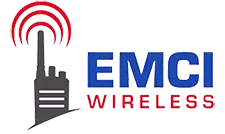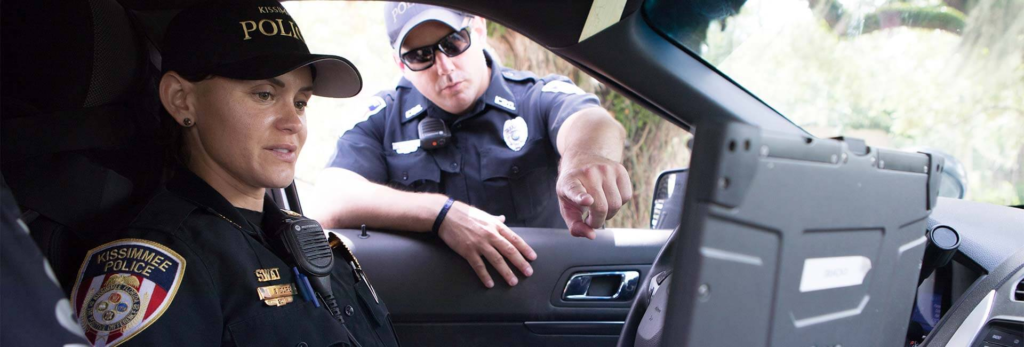As the public safety suite of mission-critical land mobile two-way radios that Motorola Solutions offers continues to evolve, there are a number of options available for programming of these subscriber devices. We put together this article to help users have an ultimate guide of the software that is available to program these devices and what the differences are between these software variations.
APX Radio Programming Software Options
Specifically, this article will cover the 3 primary software options that Motorola Solutions offers as Windows-based applications for programming the APX line of radios. Please note that as of the date this article is written, Radio Management and Radio Central are only compatible with certain models (more details below).
- Customer Programming Software (CPS)
- Radio Management
- Radio Central

APX Radio Models
The following devices are common models offered in the State & Local Government space within the United States and are the primary focus of this article:
- Portable Radios
- APX 900
- APX 1000
- APX 3000
- APX 4000
- APX 6000 and APX 6000XE
- APX 7000 and APX 7000XE
- APX 8000 and APX 8000XE
- APX NEXT
- APX NEXT XE
- APX NEXT XN
- APX N30
- APX N50
- APX N70
- Mobile Radios
- APX 1500
- APX 4500
- APX 6500
- APX 7500
- APX 8500

What is Customer Programming Software (CPS)?
For many years, Customer Programming Software (CPS) was the only software available to program devices. CPS is the successor to the decades-old subscriber device Radio Service Software (RSS). In more recent years, Radio Management and Radio Central have come into play thanks to their ability to better manage large fleets of radios, but CPS is the traditional bulletproof workhorse that many radio technicians over the years have relied on to get their devices programmed both on the service bench and in the field.
One primary advantage of using CPS is the ability to firmware upgrade and program radios very simply with the appropriate CPS version and programming cable. CPS software can run offline and this makes it a common choice in a disaster recovery scenario, for example, where Internet access is unavailable.
While CPS is great for programming radios, it does struggle with the management of large fleets of devices. The primary deficiencies that our teams have noticed in the field are:
- Codeplug management
- Codeplugs are managed by creating a master template and then in order to have a record of which radio is programmed with what template and subscriber identification (ID) number users manage that with a combination of spreadsheets and saving each individual programming file into folders. On a fleet with 1,000 radios, that means you will need to save 1,000 different files and then utilize the spreadsheet as a high level inventory to point you in the right direction if questions arise.
- Batch (multiple radio) simultaneous programming
- In the same scenario of a fleet of 1,000 radios that you are programming, with CPS each radio must be programmed one at a time.
- Firmware upgrades
- With firmware upgrades increasing in size with every release, the only way to deploy firmware upgrades for APX radios with CPS is via physically connecting the radio to the workstation and pushing the file to the radio. This is both time consuming and also makes management of firmware revisions a nightmare as it takes so long to deploy the firmware via CPS that by the time you’ve completed a fleet of 1,000 radios – there’s likely a new firmware version already released. Job security, I suppose!
CPS software supports advanced capabilities like Over The Air Programming (OTAP) if your CPS workstation is connected to a Project 25 (P25) master site with data capability as well. Unfortunately, this capability only allows a single radio to be programmed at a time. Even if a batch programming job is queued up for multiple radios, only one radio codeplug can be pushed to one radio at a time over the 9600 baud Integrated Voice and Data (IV&D) data pipe offered in P25. That can be very cumbersome with the increasing size of codeplugs now that embedded voice files with channel announcement and other advanced features are becoming more common. CPS does not support firmware upgrades over OTAP. CPS is very much a 1-to-1 programming application, but is old faithful when you need to get the job completed in a pinch.
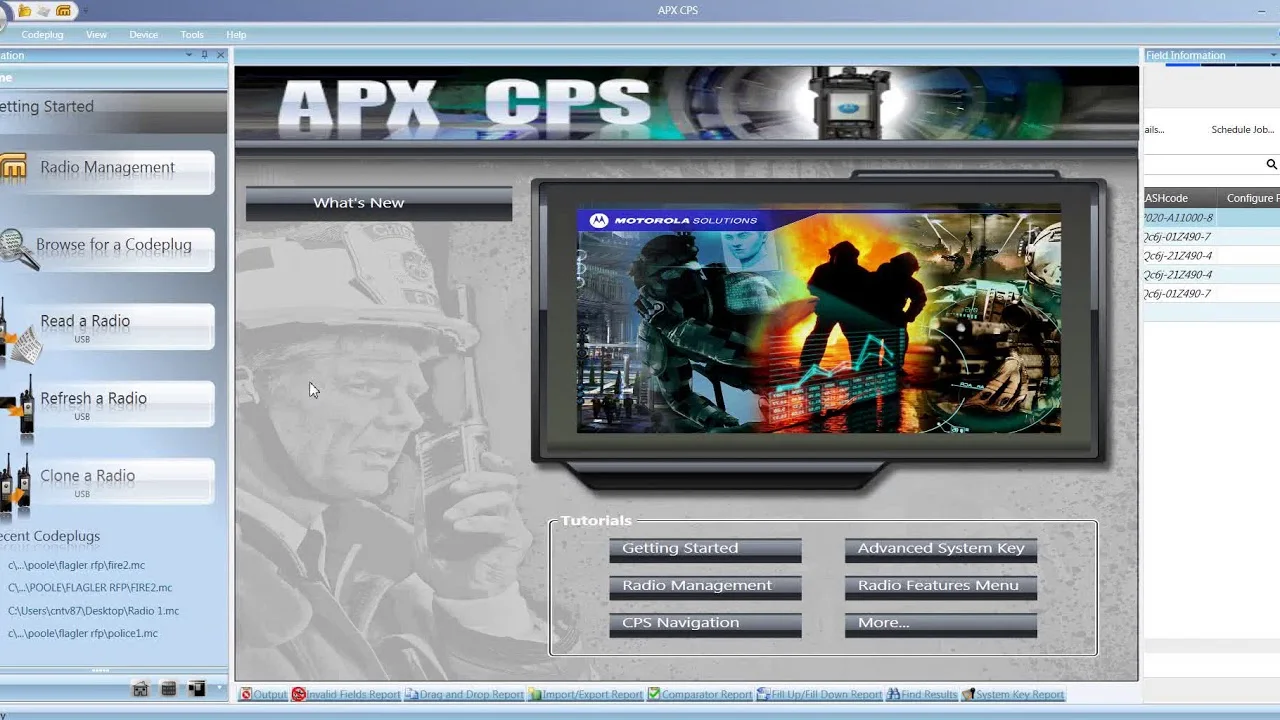
How do I download Customer Programming Software (CPS)?
CPS is now available as a free download through MyView portal, available from Motorola Solutions. You can register for an account here to download the software.
What is Radio Management?
Radio Management (RM) is a software application that was developed by Motorola Solutions as a fleet management tool to improve upon the limitations of traditional CPS. RM is a software tool that provides centralized management and control over multiple APX radios, allowing users to manage and configure their radios remotely. Once being released publicly in 2015 or so, use of this application spread like wildfire and is still a very common platform being deployed today.
How is Radio Management Deployed?
Radio Management is offered in a cloud hosted environment or as an on-premise solution that customers can deploy themselves. The cloud hosted offering is purchased directly from Motorola Solutions in a Software-as-a-Service (SaaS) model. The on-premise offering can be purchased as a SaaS offering or a one-time purchase. Both offerings are the exact same software, just different deployment and billing methods. Both offerings also include the first 100 licenses for free.
All Radio Management deployments comprise of 3 software applications:
- Radio Management Database Server
- Radio Management Job Processor(s)
- Radio Management Device Programmer(s)
The Radio Management Database Server stores all of the codeplug and fleetwide inventory information. As this server’s primary function is storing information, it is common to incorporate mirrored RAID arrays to ensure data is as safe as possible.
The Radio Management Job Processor(s) are servers responsible for crunching all of the numbers (jobs) when an update is scheduled. The amount of horsepower required for your server depends on a number of factors, including how many devices you’re trying to update and how fast you want the job to be ready for the devices. You can incorporate more than 1 Job Processor server to speed up the process and balance the workload. When there are not any jobs actively being scheduled, these servers sit idle.
The Radio Management Device Programmer(s) are typically workstations in the field and are the medium between the APX radio and the Radio Management Database Server. When a Radio Management Device Programmer identifies that an APX radio is available and ready to be programmed, it queries the Radio Management Database Server to see if a job is available for that serial number. If there is a job available, it pushes the job out to the APX radio device.
APX radios can communicate with a Device Programmer via a programming cable attached to the workstation or over Wi-Fi. In the case of Wi-Fi operation, a number of network considerations must be made including ports being open and broadcast traffic being allowed between the APX radio device and the Device Programmer.
A single Device Programmer can also be incorporated into the Motorola ASTRO 25 Customer Enterprise Network (CEN) and can be utilized for OTAP operation to push jobs from the Radio Management Database Server to the APX radios in the field over P25 trunking systems. A hardware-based advanced system key is required for this to work correctly.
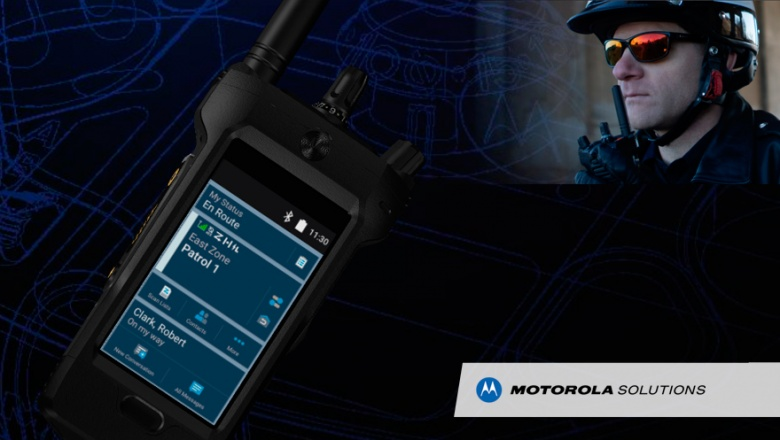
How do I download Radio Management (RM)?
RM is now available as a free download through the Motorola Solutions MyView portal and includes the first 100 device licenses for free. You can register for an account here to download the software.
What is Radio Central?
Radio Central is the latest and greatest management platform for LTE-enabled Motorola two-way radios. This software tool was launched in 2020 and allows administrators to both monitor and manage a fleet of two-way radios from a central location, making it easier to organize and coordinate resources and programming efforts. The platform provides features such as radio inventory management, remote firmware updates, and real-time radio programming status, allowing administrators to have greater control over their communication devices. The platform also provides detailed logging, allowing administrators to easily view the status of their fleet at any time. Radio Central is being rolled out to other models of APX radios, but today it only incorporates LTE-enabled devices like the APX NEXT, APX NEXT XE, APX NEXT XN, and APX N70 devices.
How is Radio Central Deployed?
Radio Central is offered in a cloud hosted environment only. The cloud hosted offering is purchased directly from Motorola Solutions in a Software-as-a-Service (SaaS) model.
APX series devices can be programmed over LTE, Wi-Fi, or with a cable using the Radio Central client. The interface is very similar to Radio Management, but has additional features and enhancements to enable the programming of devices over LTE much more smoothly.
Note: Programming APX series devices over LTE requires the devices to have a SmartProgramming application subscription active for each device. If you do not have an active SmartProgramming application subscription, you can still utilize the cable or Wi-Fi programming method.
How do I download Radio Central (RC)?
Radio Central is also available to download through the Motorola Solutions MyView portal. Once you download and install the client, you will login utilizing your MyView username and password. From there, you will see any agencies that you are assigned access to and you can switch between the agencies at any time. This allows a single radio technician to manage devices from multiple agencies. A Radio Central agency is established based upon the Motorola Solutions customer number that the devices were ordered under.
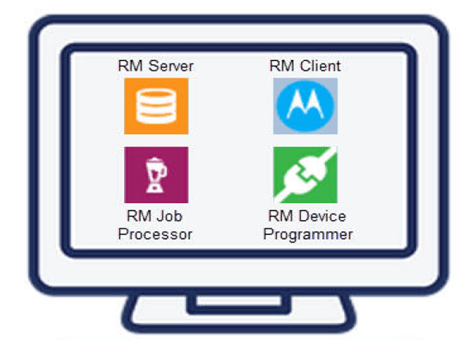
Summary
While Customer Programming Software (CPS), Radio Management (RM), and Radio Central (RC) are all effective tools for programming your mission critical devices, we recommend utilizing Radio Central for LTE-enabled devices with Smart Programming enabled and Radio Management for all other devices. CPS is a workhorse and is a fantastic fallback, but day to day system management requires an advanced tool like Radio Management or Radio Central.
